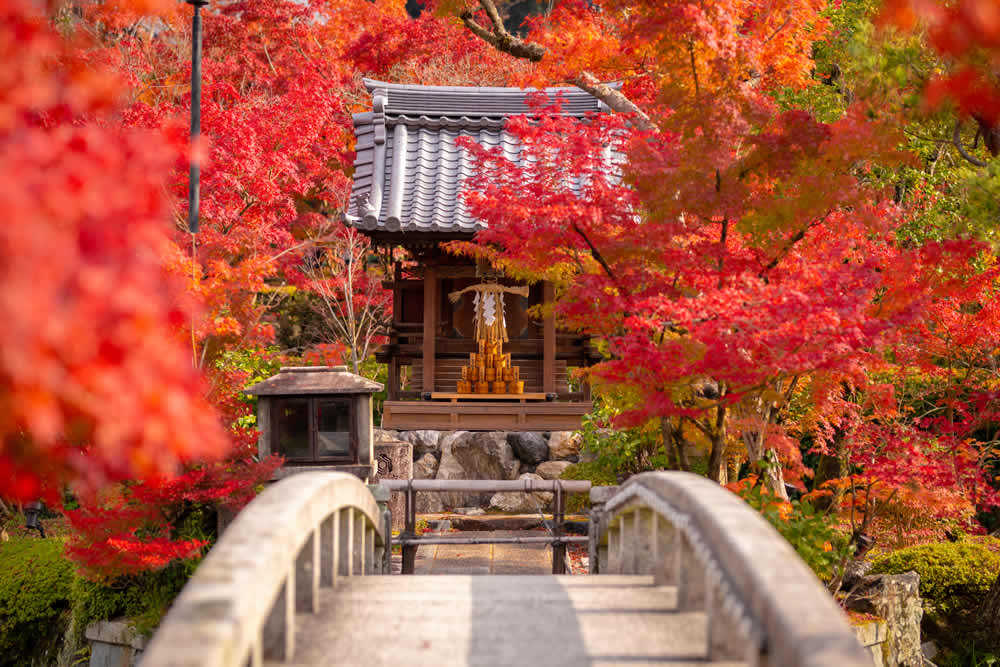Welcome to Kyoto, the cultural heart of Japan, where every corner tells a story of its rich history and timeless tradition. As the former imperial capital for over a thousand years, this city is a treasure trove of ancient temples, traditional tea houses, stunning gardens, and much more.
But Kyoto is not just about the past. It’s a dynamic city that beautifully blends the old with the new, offering a unique mix of experiences for every traveler. Whether you’re a history buff, a nature lover, a foodie, or a culture enthusiast, Kyoto has something for you.
In this guide, we present 20 ideas that will help you fully experience the charms of Kyoto, leaving you with memories that will last a lifetime.
Contents
- Top 20 Things to do in Kyoto
- 1. Fushimi Inari Shrine’s Iconic Gates
- 2. Uncover the Mysteries of the Arashiyama Bamboo Forest
- 3. Immerse Yourself in Gion, the Geisha District
- 4. Dive Deep into Kyoto’s History with a Walking Tour
- 5. Stand Awestruck by Kinkaku-ji (Golden Pavilion)
- 6. Experience the Serenity of a Traditional Tea Ceremony
- 7. Witness the Samurai Spirit at the Kembu Theater
- 8. Feast Your Senses at Nishiki Market
- 9. Journey through History at Nijo Castle
- 10. Revel in the Breathtaking View from Kiyomizu-dera Temple
- 11. Reflect and Relax Along the Philosopher’s Path
- 12. Delve into Japanese Pop Culture at the Kyoto International Manga Museum
- 13. Hang Out with Primates at the Iwatayama Monkey Park
- 14. Explore the Art of Sake Brewing
- 15. Seek out Cherry Blossoms or Autumn Leaves
- 16. Discover Regal Elegance at the Kyoto Imperial Palace
- 17. Find Tranquility at Ginkaku-ji (Silver Pavilion)
- 18. Dine on Shojin Ryori, Traditional Buddhist Cuisine
- 19. Master Japanese Cooking
- 20. See Kyoto on Two Wheels
- Exploring Kyoto: Tips for a Memorable and Comfortable Visit
- 20 Things to do in Kyoto – A Tapestry of Unforgettable Experiences
Top 20 Things to do in Kyoto
1. Fushimi Inari Shrine’s Iconic Gates
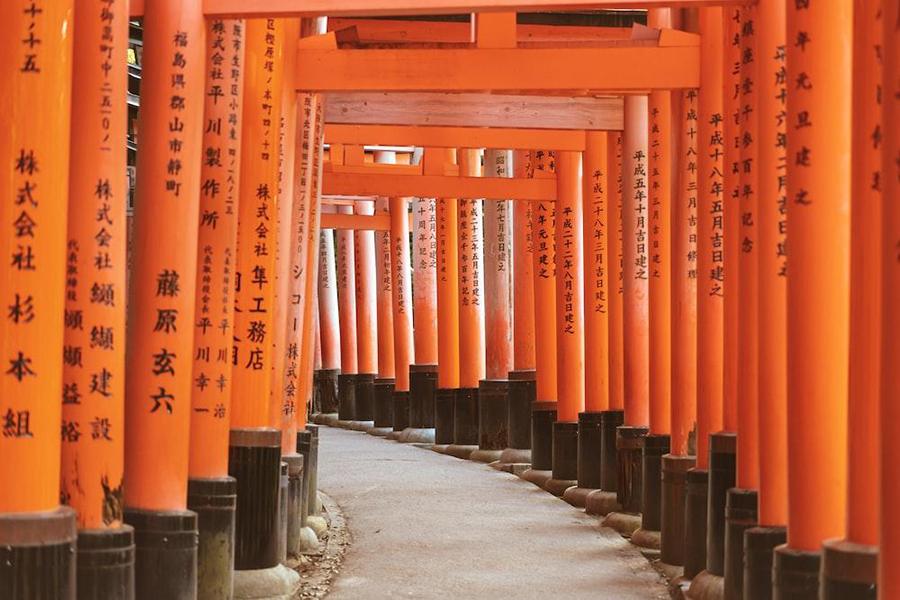
The Fushimi Inari Shrine is one of Kyoto’s most iconic landmarks, known worldwide for its thousands of vermilion torii gates that weave up a hillside. As you walk through these gates, each donated by a thankful business over the centuries, you’ll feel as if you’ve stepped back in time. This shrine, dedicated to Inari, the Shinto god of rice, has been a place of worship since the 8th century.
Fushimi Inari is not just about the gates; the shrine complex also houses several smaller shrines, tea houses, and fox statues, representing the messengers of the god Inari.
2. Uncover the Mysteries of the Arashiyama Bamboo Forest
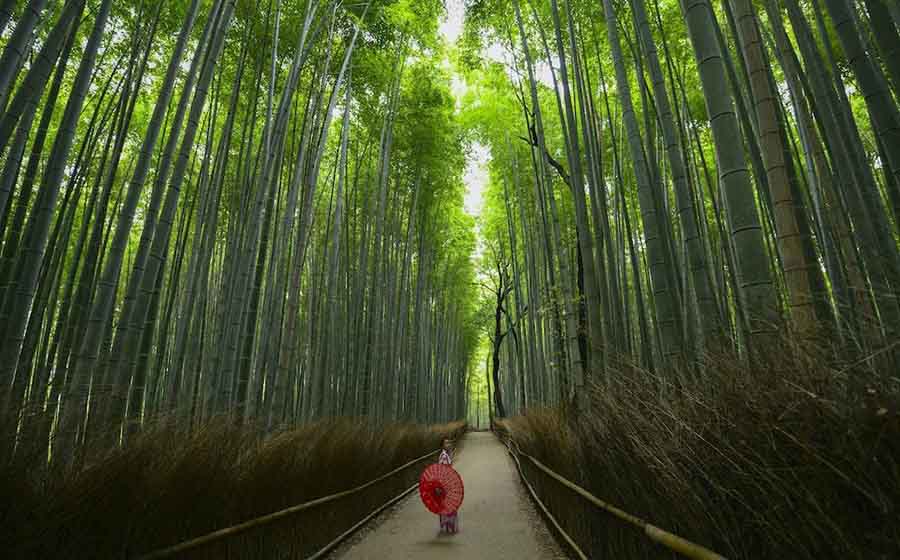
One of Kyoto’s top sights is the mesmerizing Arashiyama Bamboo Forest. A walk through this forest is like entering another world. The thick, towering bamboo stalks seem to continue endlessly in every direction, and their rustling in the wind adds to the ethereal, almost magical atmosphere.
There’s a unique quality to the light within the forest, as it filters through the densely packed bamboo, casting a beautiful, soothing green glow. The forest also has a serene, calming effect, making it a wonderful spot for a reflective walk, especially in the early morning or late evening when it’s less crowded.
3. Immerse Yourself in Gion, the Geisha District
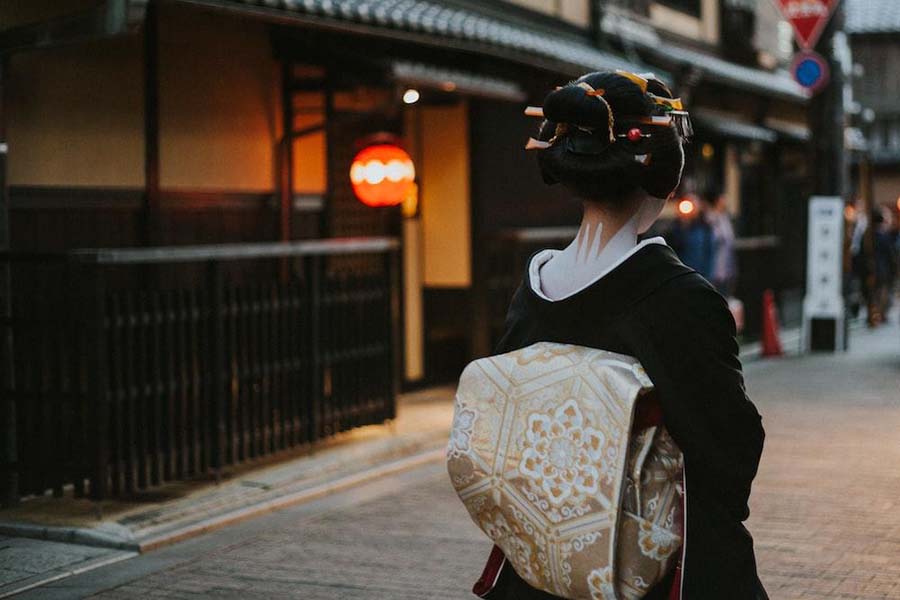
Gion, Kyoto’s historic geisha district, is like a living museum. As you wander its atmospheric streets, you’ll pass traditional wooden machiya houses, exclusive ochaya (teahouses), and high-end kaiseki restaurants. Gion is the heart of Kyoto’s traditional arts scene, and it’s not uncommon to see geiko and maiko hurrying to their appointments in their exquisite kimonos.
The district is at its most atmospheric in the early evening when the lanterns are lit and the narrow lanes echo with the clatter of geta (wooden sandals) on the stone-paved streets. Also, remember to pay a visit to the Yasaka Shrine, located at the end of Shijo Avenue.
4. Dive Deep into Kyoto’s History with a Walking Tour
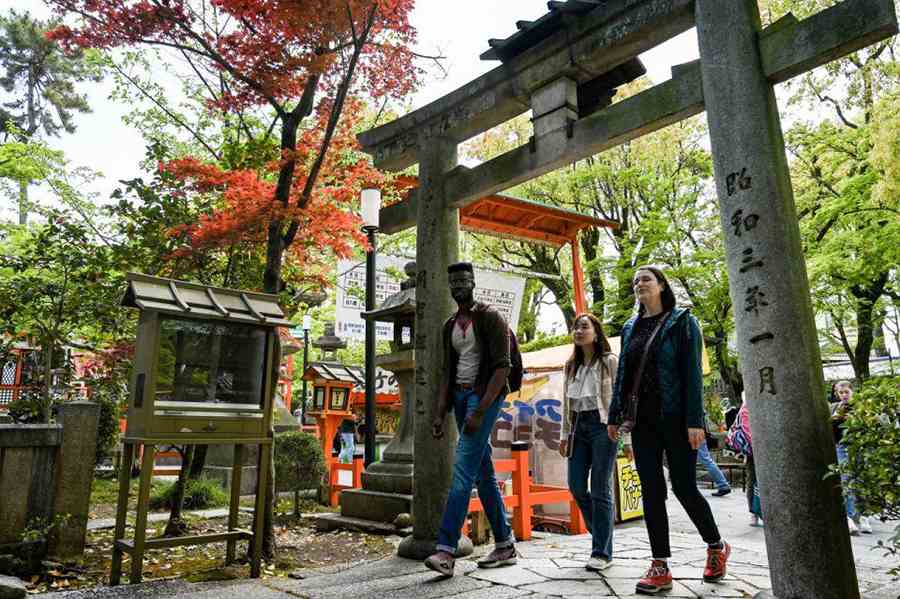
A walking tour is one of the best ways to explore Kyoto, a city steeped in history and tradition. These guided tours take you through the city’s most significant cultural and historical sites, including temples, shrines, gardens, and old districts. Along the way, knowledgeable guides share interesting facts, stories, and legends about the sites you’re visiting.
You’ll get to discover hidden gems that you might miss otherwise and gain a deeper understanding of Kyoto’s history and culture. Whether it’s the hidden corners of the Geisha district or the ancient shrines nestled within the city’s backstreets, a walking tour brings Kyoto’s thousand-year history to life.
5. Stand Awestruck by Kinkaku-ji (Golden Pavilion)
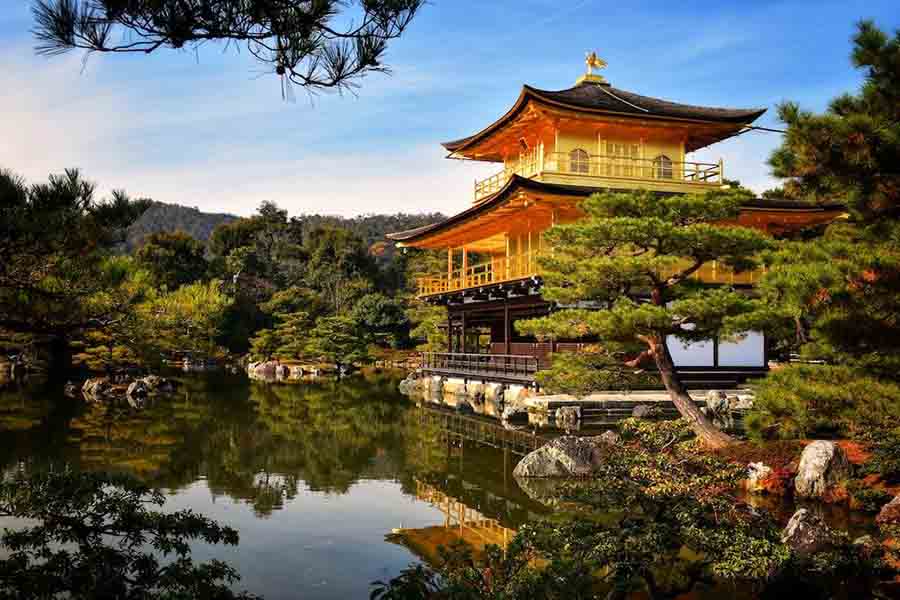
Kinkaku-ji, or the Golden Pavilion, is an awe-inspiring sight. This Zen Buddhist temple, built in the late 14th century, is covered in gold leaf that shimmers brilliantly in the sunlight.
The pavilion was originally a retirement villa for the shogun Ashikaga Yoshimitsu, and after his death, it was converted into a Zen temple. It’s surrounded by a beautiful traditional Japanese garden, designed for strolling, and a tranquil pond that beautifully reflects the pavilion.
Despite being burned down several times throughout history, the temple has always been restored, and it stands today as a symbol of Kyoto’s resilience.
6. Experience the Serenity of a Traditional Tea Ceremony
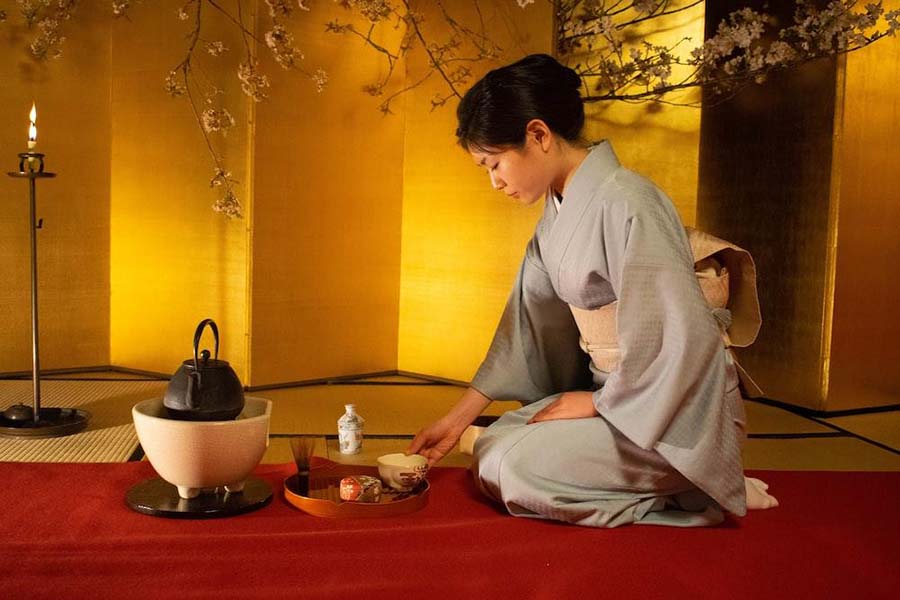
Participating in a traditional Japanese tea ceremony is a unique and memorable experience. This ancient ritual, known as the Way of Tea, involves the ceremonial preparation and presentation of matcha, a powdered green tea.
The ceremony is a form of meditation, emphasizing mindfulness and appreciation for the simplicity of the present moment. Every movement is carefully choreographed and has a specific meaning.
Whether held in a teahouse or a temple, the tea ceremony is more than just about drinking tea – it’s a spiritual practice that brings calmness and peace to the participant.
7. Witness the Samurai Spirit at the Kembu Theater
For a slice of Japan’s samurai culture, head to the Samurai Kembu Theater. This unique theater offers performances showcasing Kembu, a traditional Japanese art form that combines swordplay and dance. It was practiced by samurai warriors to build concentration, balance, and the spirit. In the atmospheric setting of the theater, skilled performers enact dramatic stories from Japan’s feudal era, their swordsmanship and precise movements a testament to years of training. After the show, you can even take a workshop to learn some basic Kembu moves and pose for photos with a real samurai sword.
8. Feast Your Senses at Nishiki Market
Nishiki Market, often referred to as “Kyoto’s Kitchen,” is a food lover’s paradise. This bustling market street is lined with hundreds of vendors selling a wide array of Japanese food items.
You’ll find everything from fresh seafood and seasonal produce to Kyoto specialties like pickled vegetables, yuba (tofu skin), and matcha-flavored sweets. The market is also a great place to sample street food, with many stalls offering bite-sized portions to try.
Alongside the food vendors, you’ll also find shops selling Japanese cookware and souvenirs. A visit to Nishiki Market is a feast for the senses and a great opportunity to learn about Japan’s culinary culture.
9. Journey through History at Nijo Castle
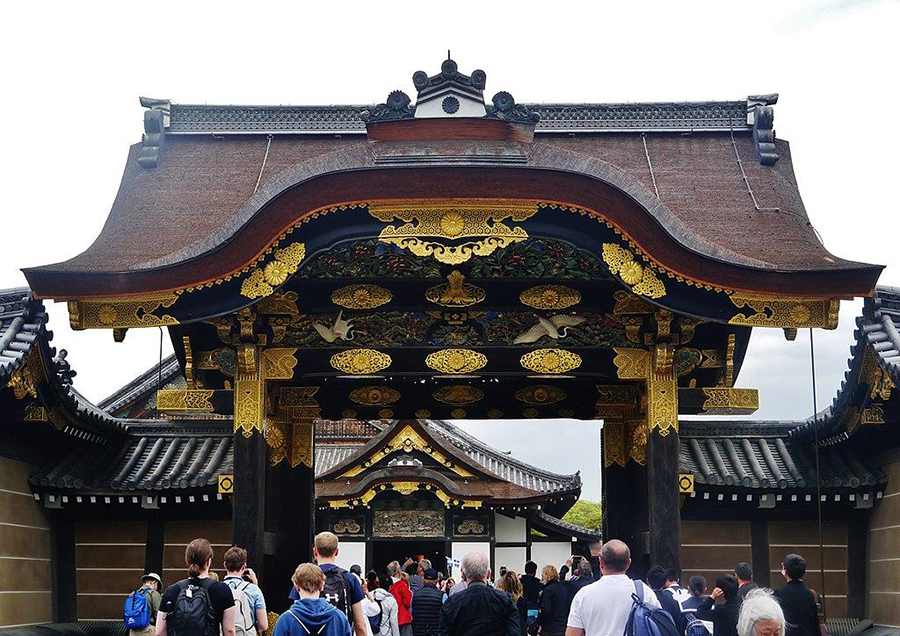
Nijo Castle, built in 1603 as the Kyoto residence of Tokugawa Ieyasu, the first shogun of the Edo Period, is a UNESCO World Heritage site. The castle complex includes the Ninomaru Palace, known for its ‘nightingale floors’ that chirp like birds when stepped on – a security measure against intruders.
The interiors of the palace are adorned with intricate screen paintings, and the rooms are furnished with tatami mats and elegantly carved transoms. Outside, the expansive castle grounds feature ornamental gardens, scenic ponds, and old fortifications like stone walls and moats. A visit to Nijo Castle offers a fascinating look into the world of the samurai.
10. Revel in the Breathtaking View from Kiyomizu-dera Temple
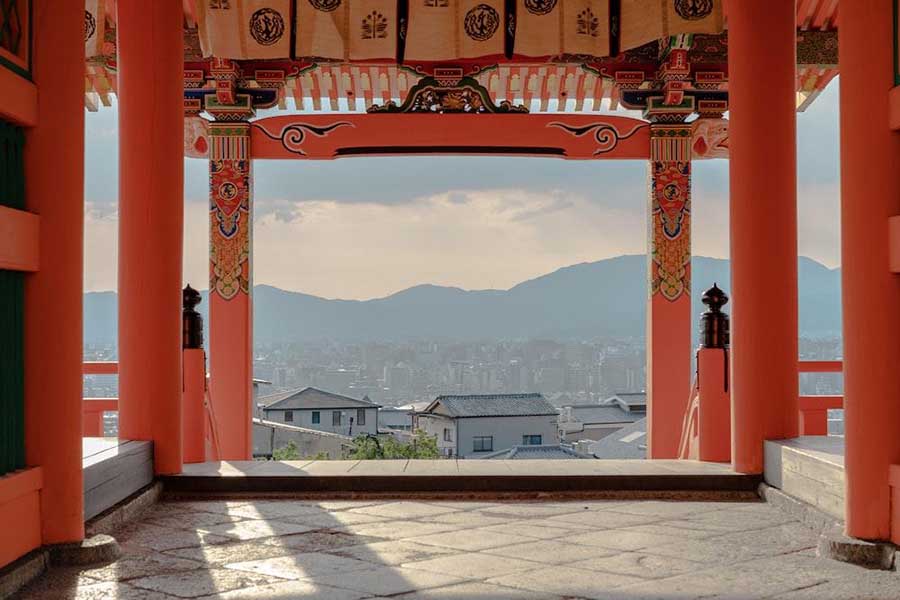
Located on the Otowa Mountain in eastern Kyoto, the Kiyomizu-dera Temple is one of the city’s most celebrated temples. The main hall, standing on a cliff, is an architectural marvel, with a large wooden stage supported by hundreds of pillars.
The stage offers sweeping views of the city and the cherry and maple trees below, making it a popular spot for viewing cherry blossoms in spring and colored leaves in autumn. The temple complex includes several other shrines, a three-story pagoda, and the Otowa Waterfall, where visitors drink sacred water for health, longevity, and success.
11. Reflect and Relax Along the Philosopher’s Path
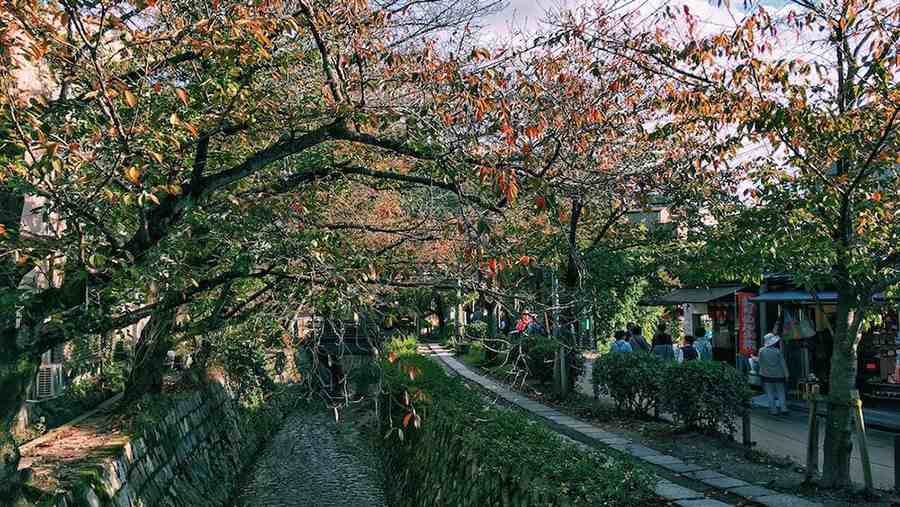
The Philosopher’s Path, named after the famous Japanese philosopher Nishida Kitaro who used to meditate while walking this route, is a two-kilometer stone path along the canal lined by hundreds of cherry trees. During the sakura season in spring, the trees bloom beautifully, creating a breathtaking canopy of pink blossoms.
The path starts from the Silver Pavilion and ends in the neighborhood of Nanzenji, passing by numerous smaller temples and shrines. It’s a great place for a leisurely stroll, offering plenty of opportunities for reflection and relaxation.
12. Delve into Japanese Pop Culture at the Kyoto International Manga Museum
The Kyoto International Manga Museum is a paradise for manga enthusiasts. The museum boasts a vast collection of manga, including some rare and historical pieces, with tens of thousands of volumes available for visitors to read. The museum’s walls are lined with bookshelves, and comfortable seating areas are provided for a relaxed reading experience.
In addition to reading manga, visitors can also enjoy exhibitions, workshops, and live drawing sessions by manga artists.
The museum also explores the history and cultural impact of manga through various displays, making it a fun and educational visit for both manga fans and the uninitiated.
13. Hang Out with Primates at the Iwatayama Monkey Park

For a unique and fun experience, visit the Iwatayama Monkey Park in Arashiyama. The park is home to a troop of over 100 Japanese macaque monkeys, also known as snow monkeys. The monkeys are wild but accustomed to human visitors, and you can even feed them under the staff’s supervision.
To reach the park, you need to hike up a small mountain, but the effort is well worth it. Not only do you get to interact with the monkeys, but you also get a panoramic view of Kyoto from the top.
14. Explore the Art of Sake Brewing
If you enjoy sake, a tour of a sake brewery in Kyoto is a must-do. Kyoto, with its high-quality rice and pristine water, is renowned for its excellent sake.
On a brewery tour, you’ll learn about the intricate process of brewing sake, from the polishing of the rice to the fermentation and aging. You’ll also get to sample different types of sake and understand the nuances in flavor, aroma, and texture.
Some breweries even have museums or historical exhibits, providing insight into the long history and cultural significance of sake in Japan.
15. Seek out Cherry Blossoms or Autumn Leaves
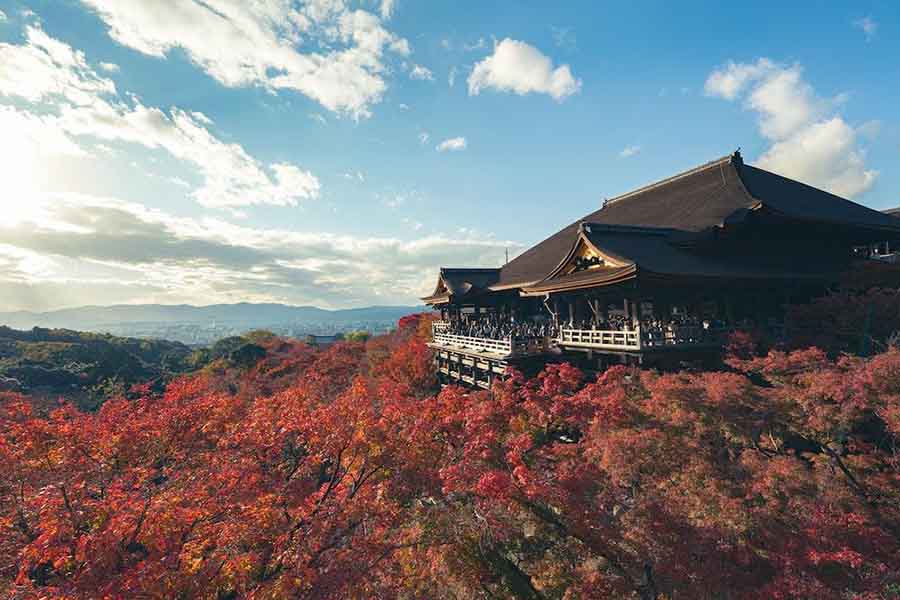
Kyoto is known for its dramatic seasonal landscapes, particularly during the sakura (cherry blossom) season in spring and the koyo (autumn leaves) season in fall. The city is home to numerous cherry and maple trees that explode into vibrant colors during these seasons, creating breathtaking scenes of natural beauty.
Popular viewing spots include Maruyama Park, Kiyomizu-dera Temple, and the Philosopher’s Path for cherry blossoms, and Kiyomizu-dera Temple, Tofuku-ji Temple, and Arashiyama for autumn leaves.
These seasons are also a time for festivals and special events, adding to the festive atmosphere.
16. Discover Regal Elegance at the Kyoto Imperial Palace
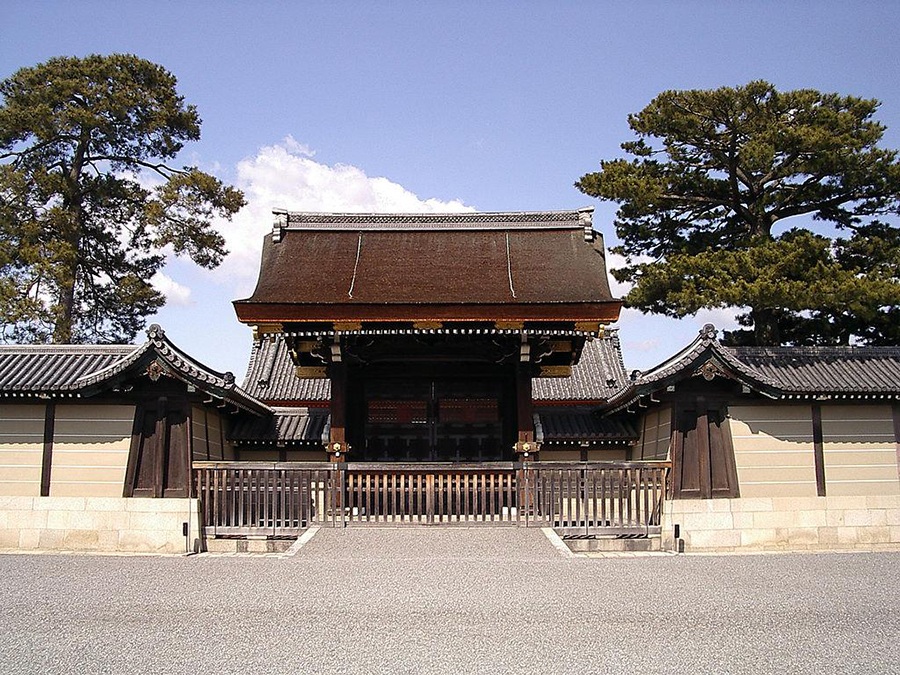
The Kyoto Imperial Palace, the former residence of the Imperial family, is a testament to Japan’s regal history. The palace features traditional Japanese architecture, with elegant buildings set amidst expansive, meticulously maintained gardens.
The palace’s main building, where the emperor lived and conducted state affairs, is particularly impressive with its cypress wood roof and white gravel courtyard. Although the current structure dates back to the 19th century, the palace grounds have been the site of the imperial residence since the 14th century. The gardens, featuring beautiful ponds, manicured lawns, and a variety of trees and flowers, are a pleasure to stroll around.
17. Find Tranquility at Ginkaku-ji (Silver Pavilion)
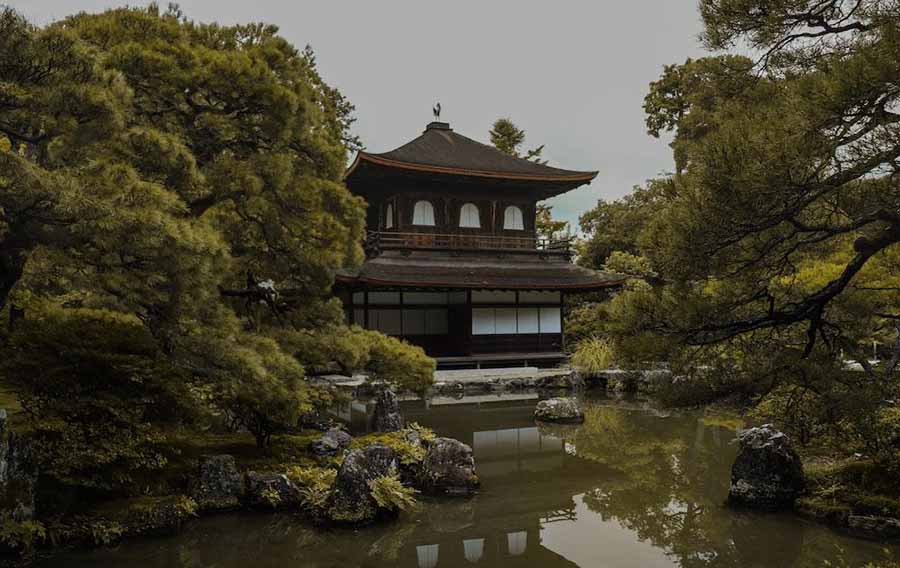
Ginkaku-ji, also known as the Silver Pavilion, is a Zen temple that embodies the principles of wabi-sabi, or the beauty in simplicity and transience.
Although it’s not covered in silver like its counterpart Kinkaku-ji, the temple’s subtle elegance and serene surroundings make it equally captivating. The temple grounds feature a unique dry sand garden, known as the Sea of Silver Sand, and a moss garden with a circular route for meditation. The hill behind the temple provides a viewpoint that offers panoramic views of the city and the temple’s exquisite sand garden.
18. Dine on Shojin Ryori, Traditional Buddhist Cuisine
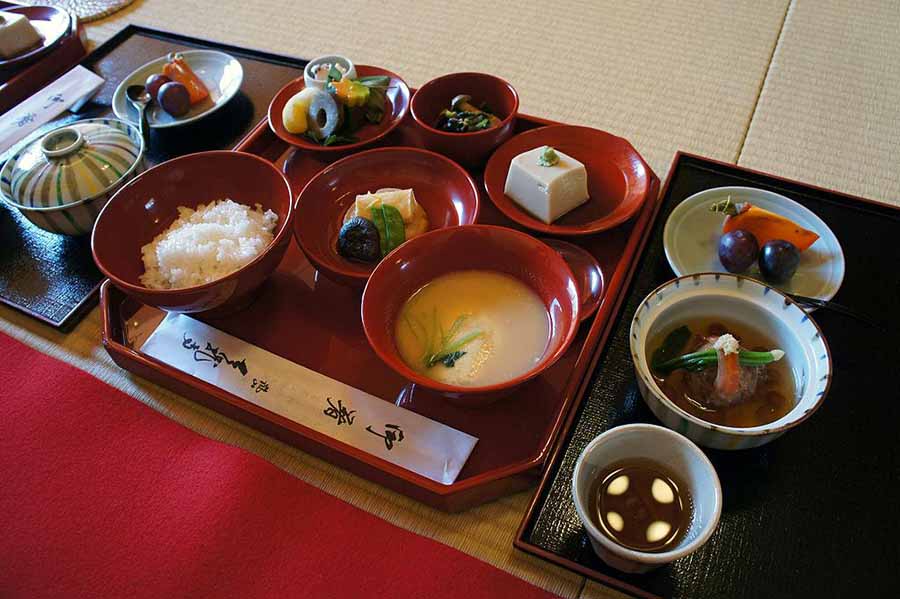
Shojin ryori is a type of vegetarian cuisine that originated in Buddhist temples. It’s prepared without meat or fish, and also avoids strong-smelling plants like garlic and onion. The dishes are simple yet flavorful, highlighting the natural tastes of the ingredients.
Dining on shojin ryori is not just about nourishment; it’s also a spiritual experience that encourages mindfulness and gratitude. Many temples in Kyoto serve shojin ryori meals, often in beautifully arranged multi-course menus. It’s a unique culinary experience that allows you to taste the Buddhist way of life.
19. Master Japanese Cooking
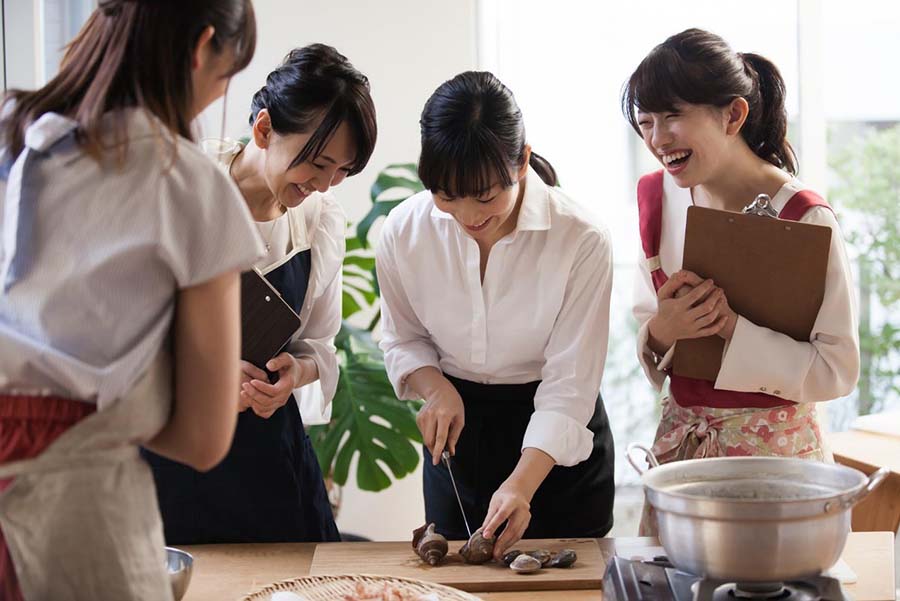
Taking a cooking class in Kyoto is a great way to immerse yourself in Japanese culinary culture. There are various cooking schools offering classes for all levels, where you can learn to make popular dishes like sushi, ramen, or tempura.
Some classes also include a visit to a local market to buy fresh ingredients, giving you a glimpse of everyday life in Kyoto. Not only will you learn to prepare delicious Japanese food, but you’ll also gain insight into the customs and traditions associated with Japanese cuisine. Plus, it’s a skill you can take home and impress your friends and family with your culinary prowess.
20. See Kyoto on Two Wheels
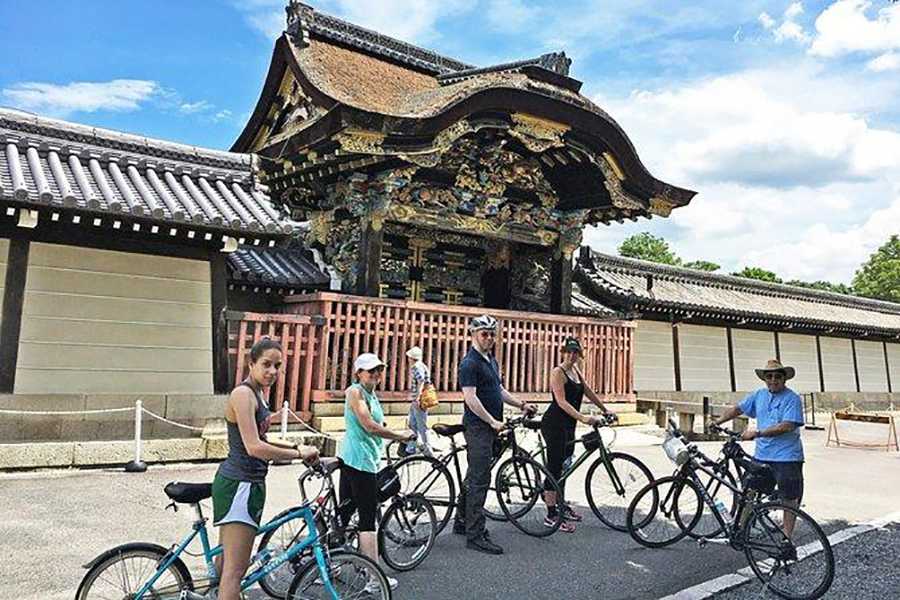
Exploring Kyoto by bike is a fun and efficient way to see the city. With its flat terrain and well-maintained bike lanes, Kyoto is very bike-friendly. Renting a bike allows you to explore at your own pace and venture off the beaten path.
You can cycle along the Kamo River, explore the traditional neighborhoods, or even ride to some of the city’s major attractions like the Golden Pavilion or Fushimi Inari Shrine. Many rental shops offer maps and suggested routes, making it easy even for first-time visitors.
Plus, biking is an eco-friendly mode of transport, so you can enjoy the city’s sights while reducing your carbon footprint.
Exploring Kyoto: Tips for a Memorable and Comfortable Visit
- Avoiding Crowds: Kyoto can get crowded, especially during the cherry blossom and autumn foliage seasons. To avoid the crowds, try visiting popular attractions early in the morning or late in the afternoon. Also, consider exploring less-frequented temples and shrines that are equally beautiful but not as crowded.
- Walking and Bike Tours: Kyoto is a city best explored on foot or by bike. Joining a guided walking or bike tour can be an efficient way to visit multiple sights and learn about their history and cultural significance. Tours often include off-the-beaten-path locations that you might miss on your own.
- Hands-On Experiences: Kyoto offers many opportunities for cultural immersion through hands-on experiences. Participating in a cooking class, tea ceremony, or a samurai workshop can provide a deeper understanding of Japanese traditions and customs. It’s also a great way to interact with locals and fellow travelers.
- Public Transportation: Kyoto’s public transportation system is efficient and convenient. Buses and trains connect major tourist spots, and day passes are available for unlimited rides. However, keep in mind that buses can get crowded during peak hours and tourist seasons.
- Etiquette: When visiting temples and shrines, remember to follow local customs. This includes washing your hands at the purification fountain, not taking photos in prohibited areas, and walking on the correct side of the torii gates.
- Food Experiences: Don’t miss the chance to try Kyoto’s culinary delights. Visit Nishiki Market for street food, try a kaiseki meal, or dine on shojin ryori at a temple. Also, consider joining a food tour to learn about Kyoto’s food culture and sample a variety of dishes.
- Seasonal Events: Kyoto has a wealth of festivals and seasonal events that can add to your visit. Check the local event calendar and try to attend a festival, tea ceremony, or special temple illumination.
Remember, the best way to enjoy Kyoto is to take your time. Don’t rush to see everything; instead, savor each experience and let the city’s charm unfold at its own pace.
20 Things to do in Kyoto – A Tapestry of Unforgettable Experiences
In exploring these 20 activities in Kyoto, it becomes clear that this city offers a rich tapestry of experiences that extend far beyond its iconic landmarks. Whether it’s the tranquility of a Zen temple, the vibrancy of a bustling food market, or the elegance of a traditional tea ceremony, each experience offers a unique glimpse into the city’s aesthetic and cultural richness.
Kyoto is a place that invites you to immerse yourself in its traditions, savor its culinary delights, and marvel at its natural and architectural beauty.
So, whether you’re planning your first trip or your next visit, let Kyoto captivate you with its endless array of unforgettable experiences. The city’s charm is enduring, and every journey here promises new discoveries that will leave lasting impressions.
